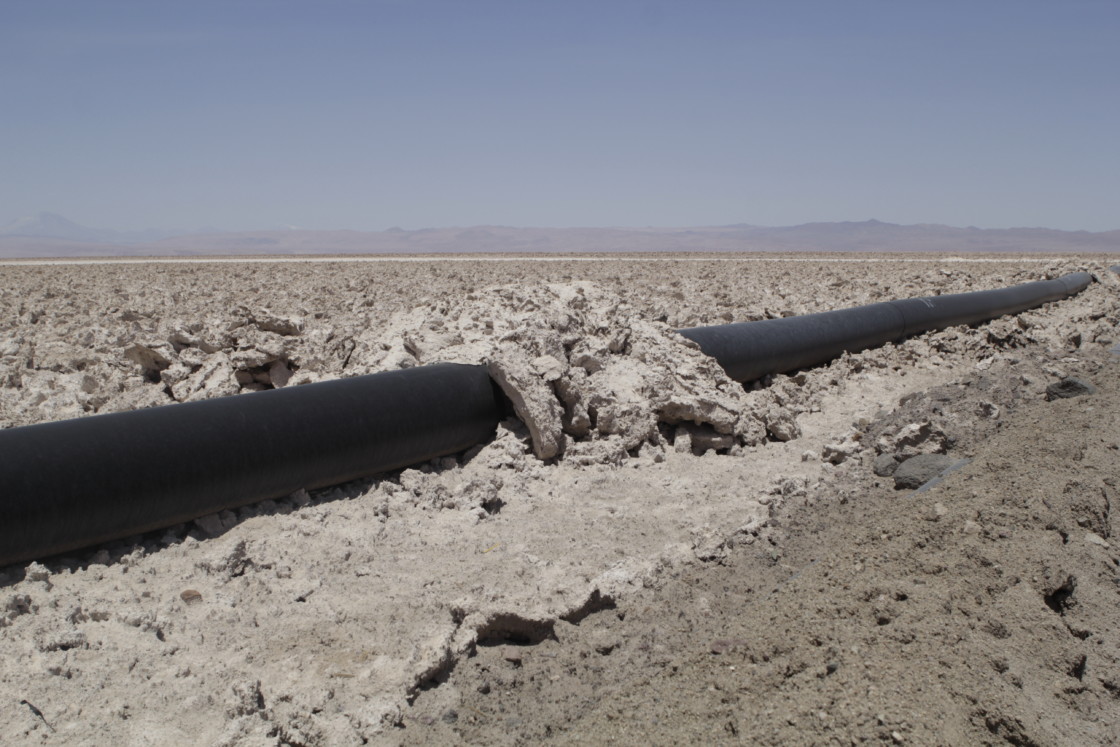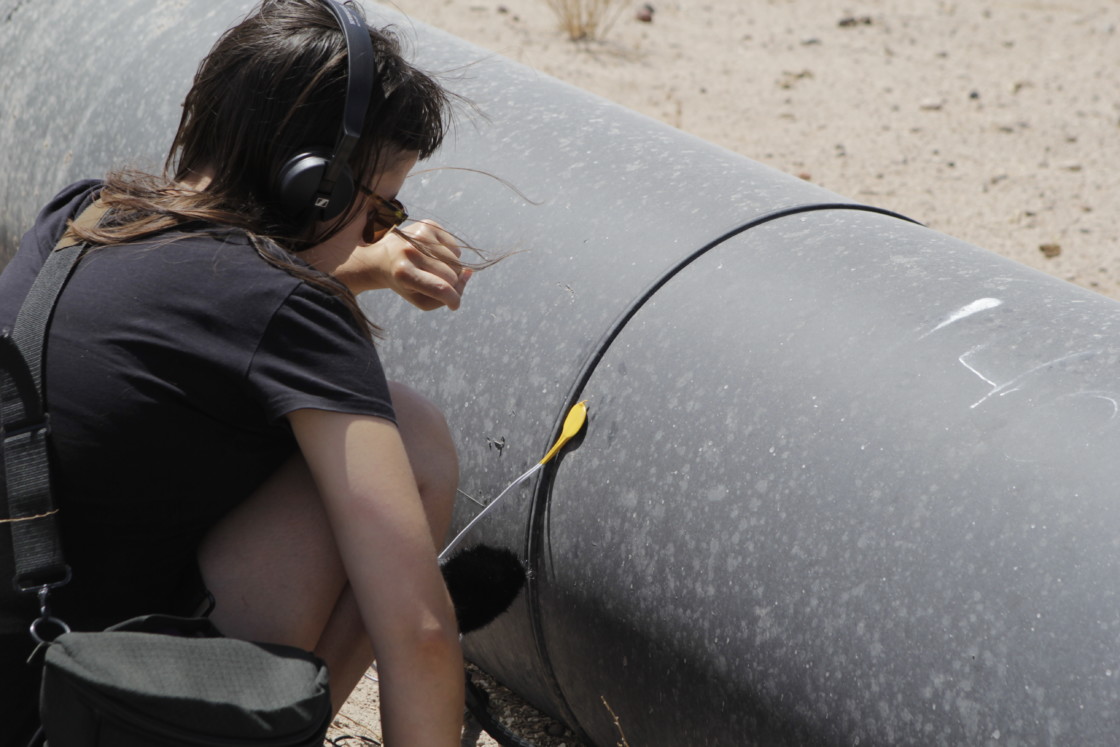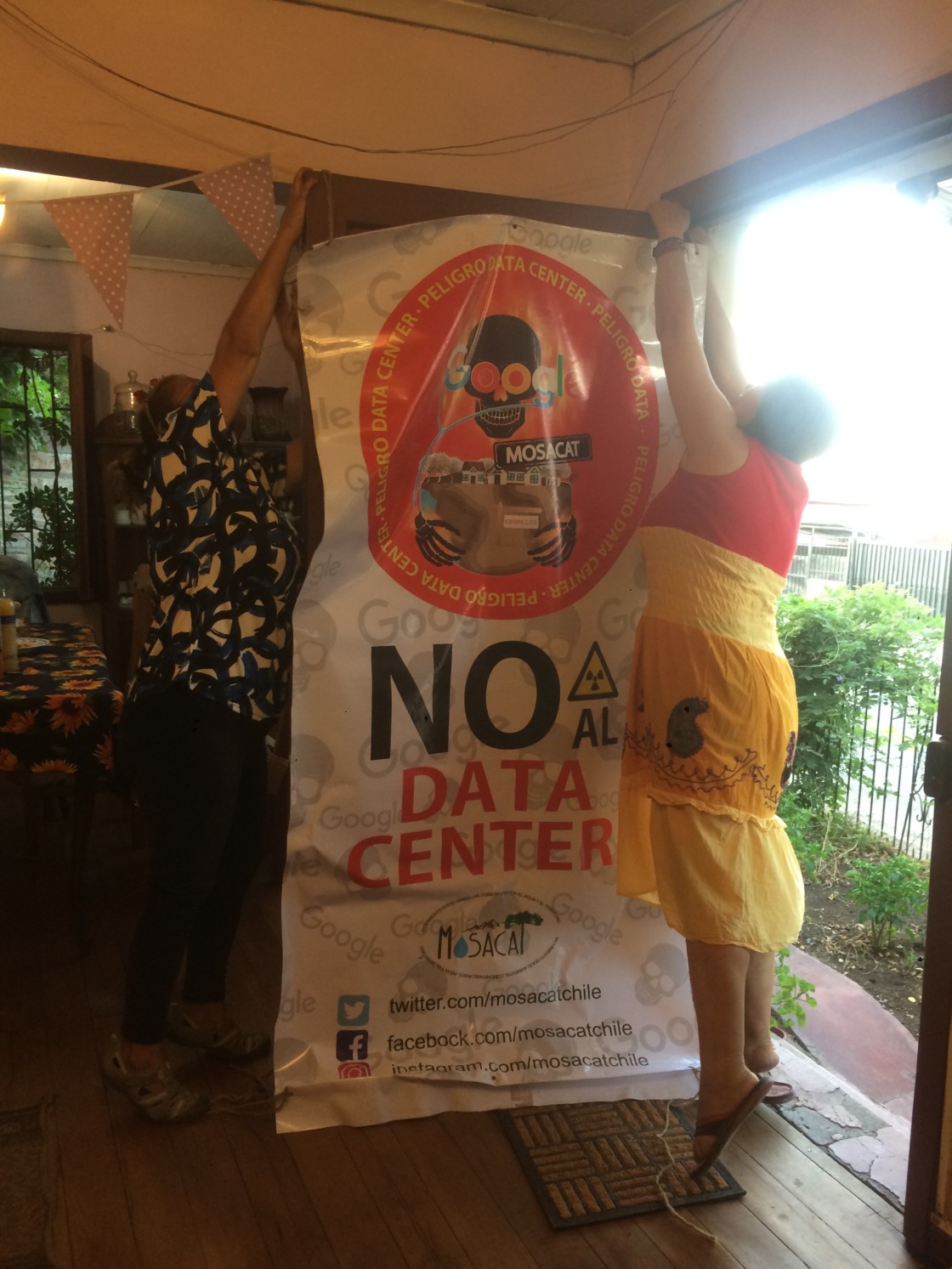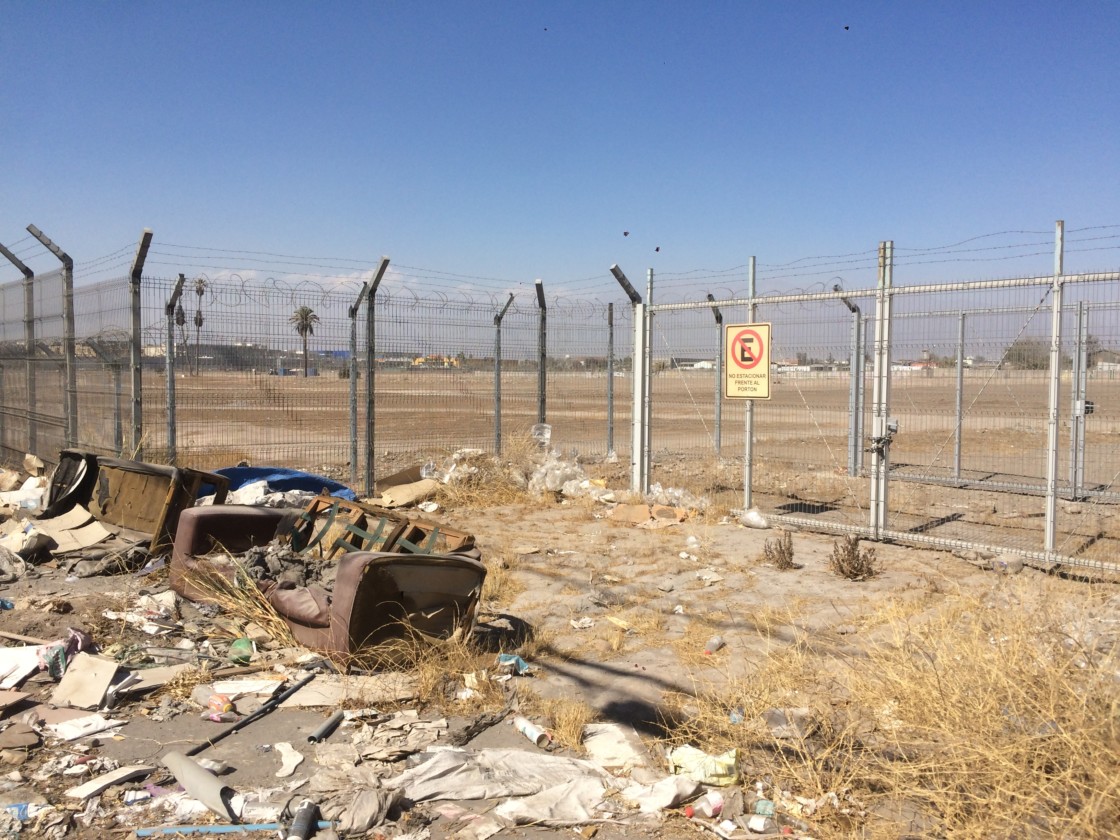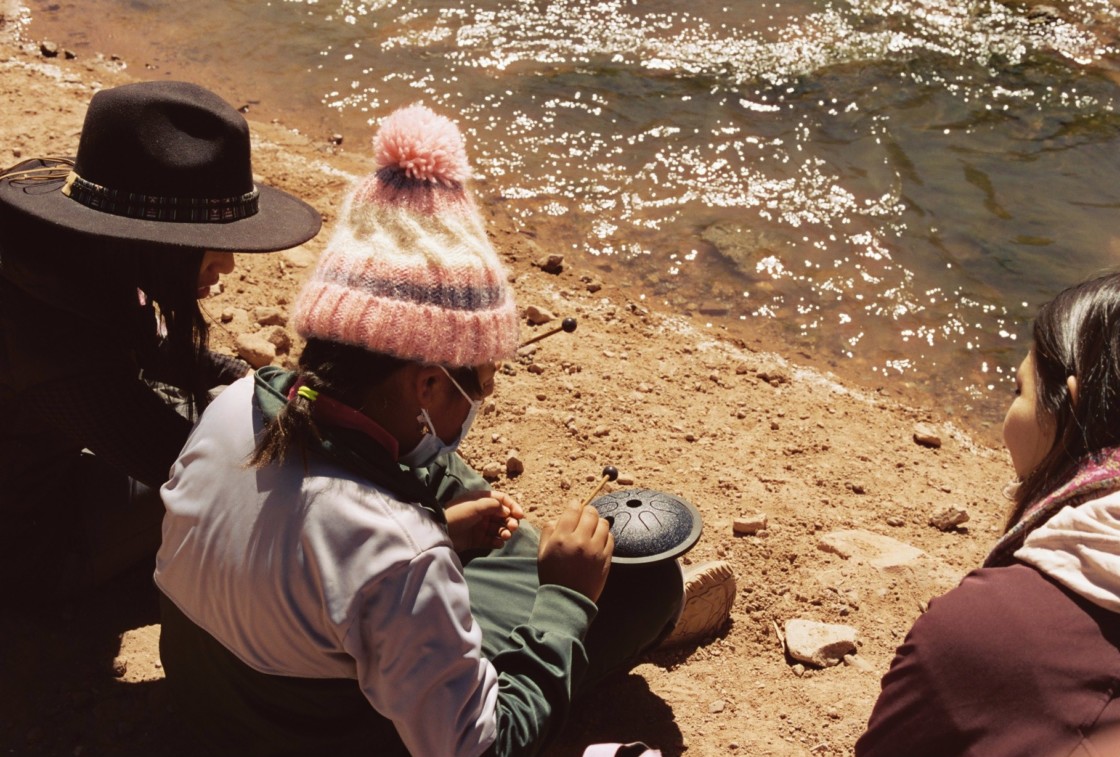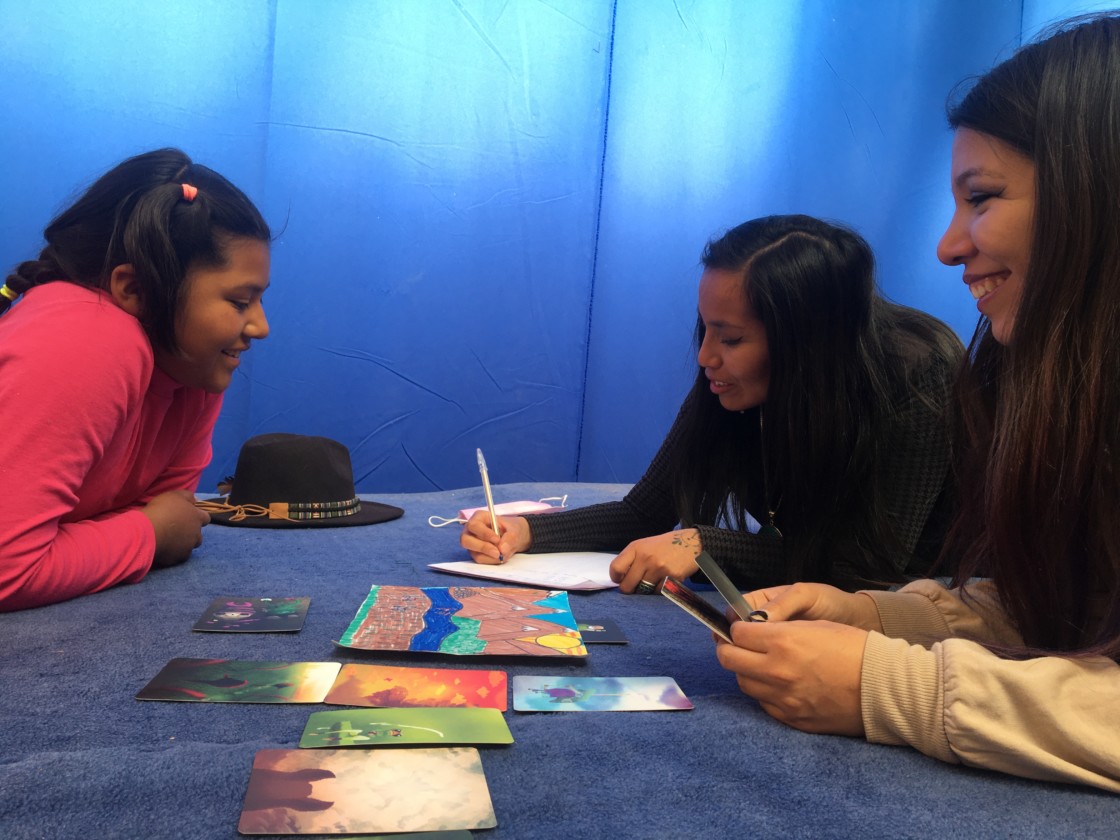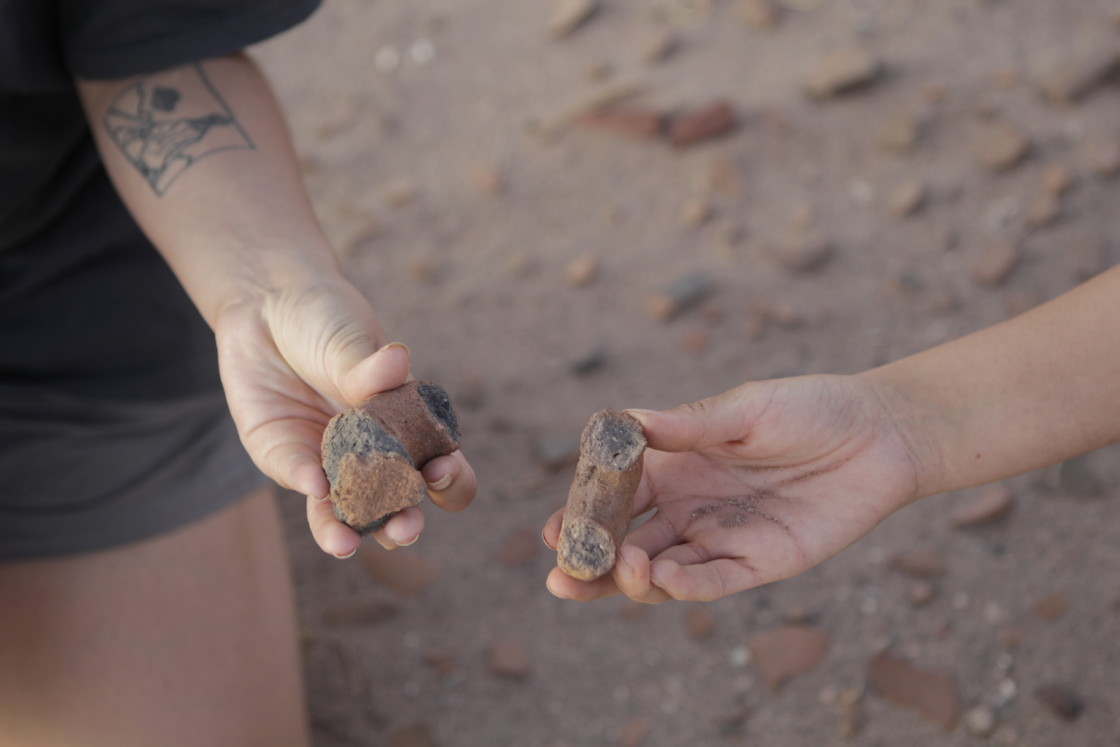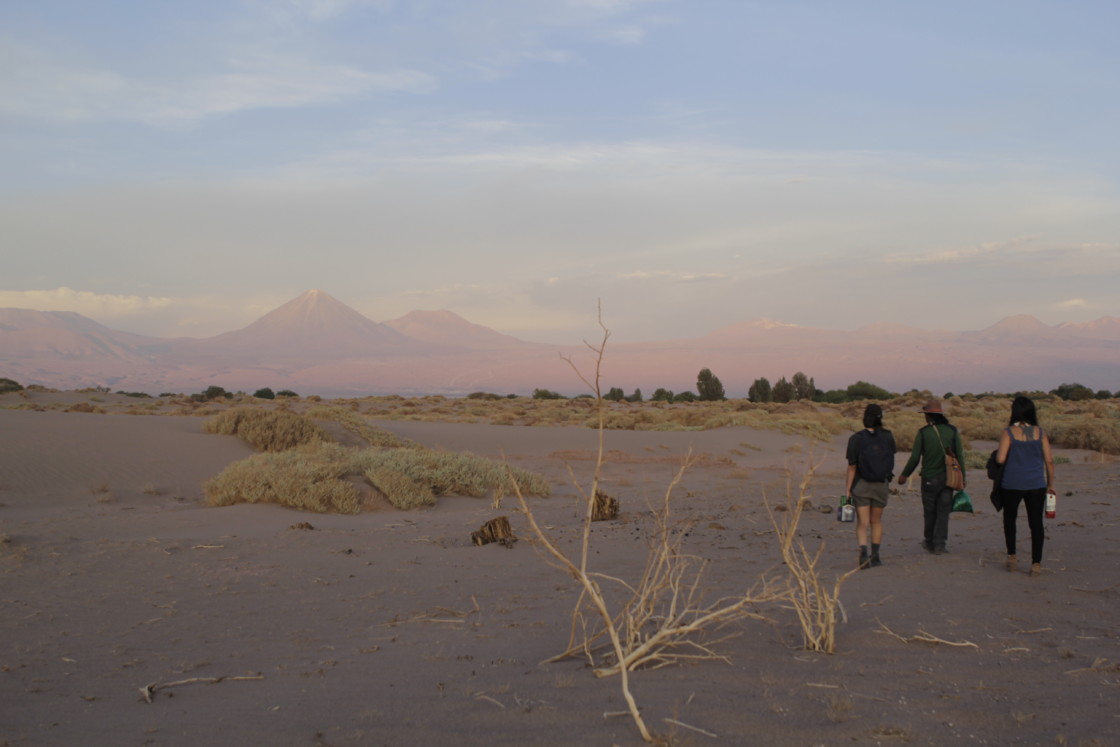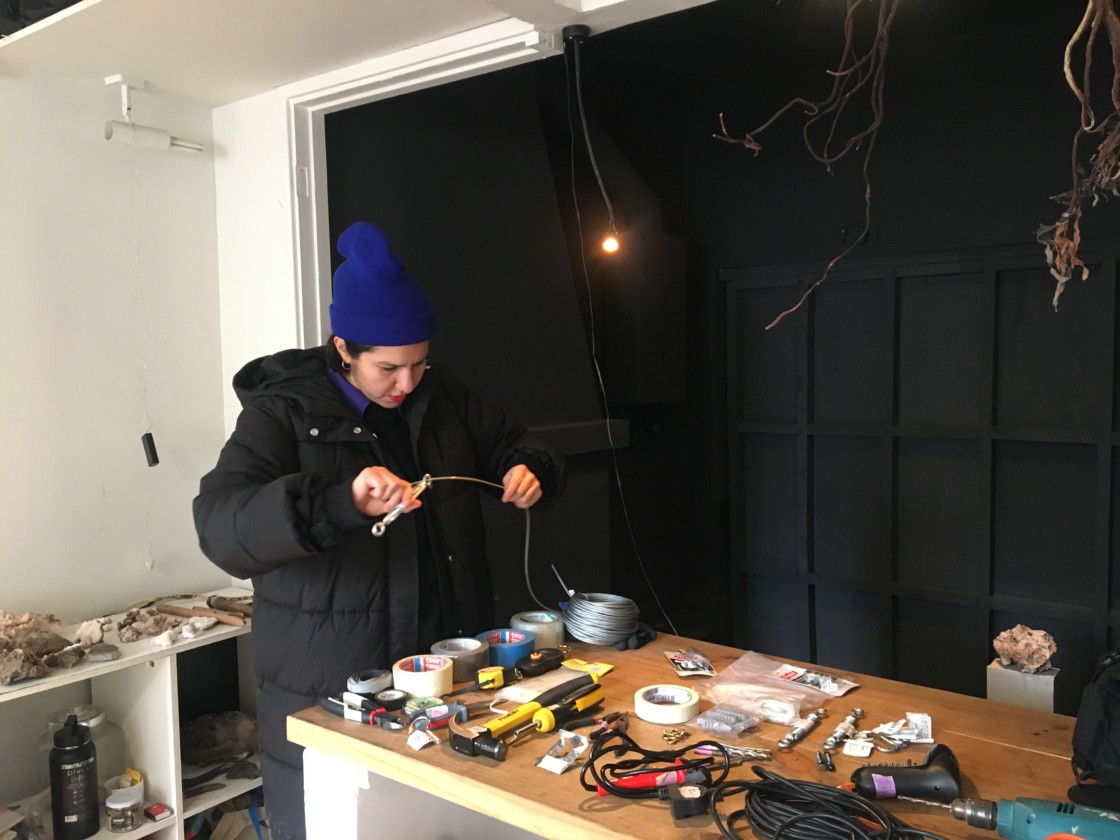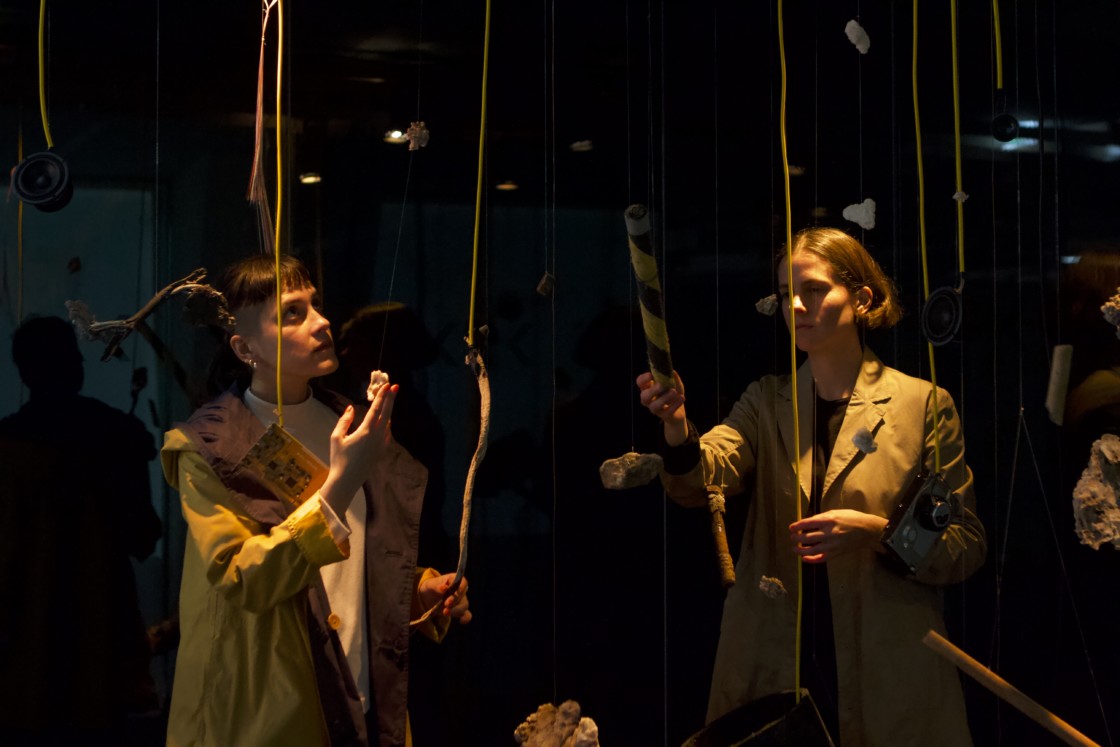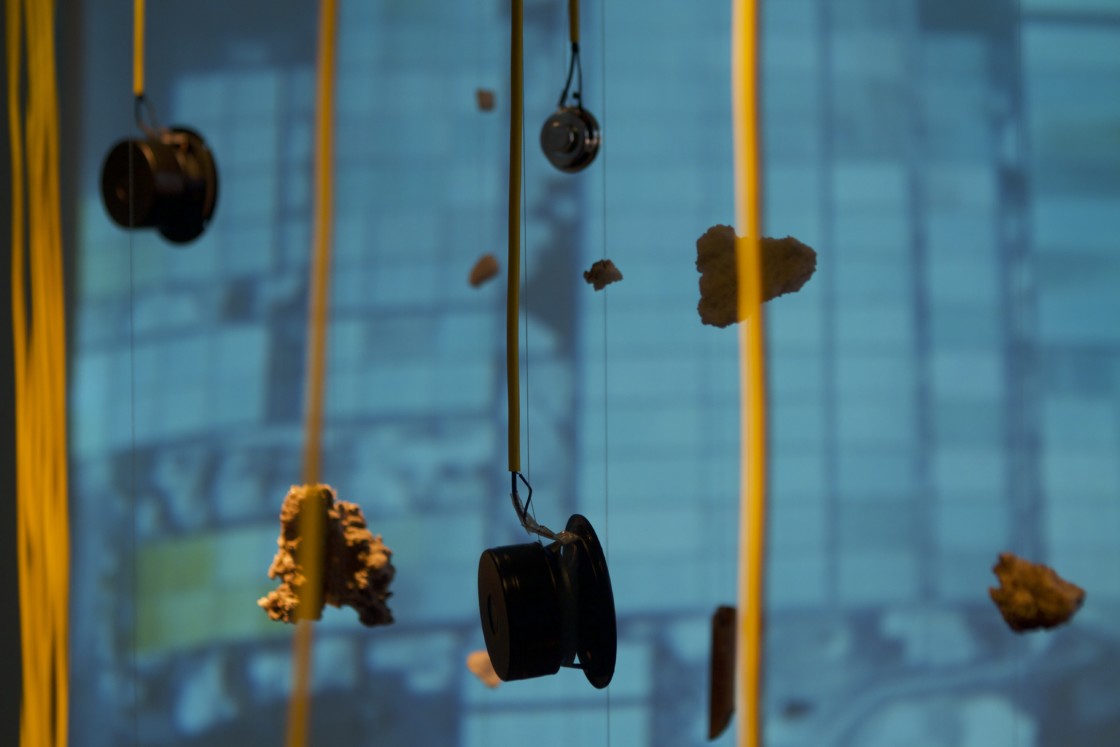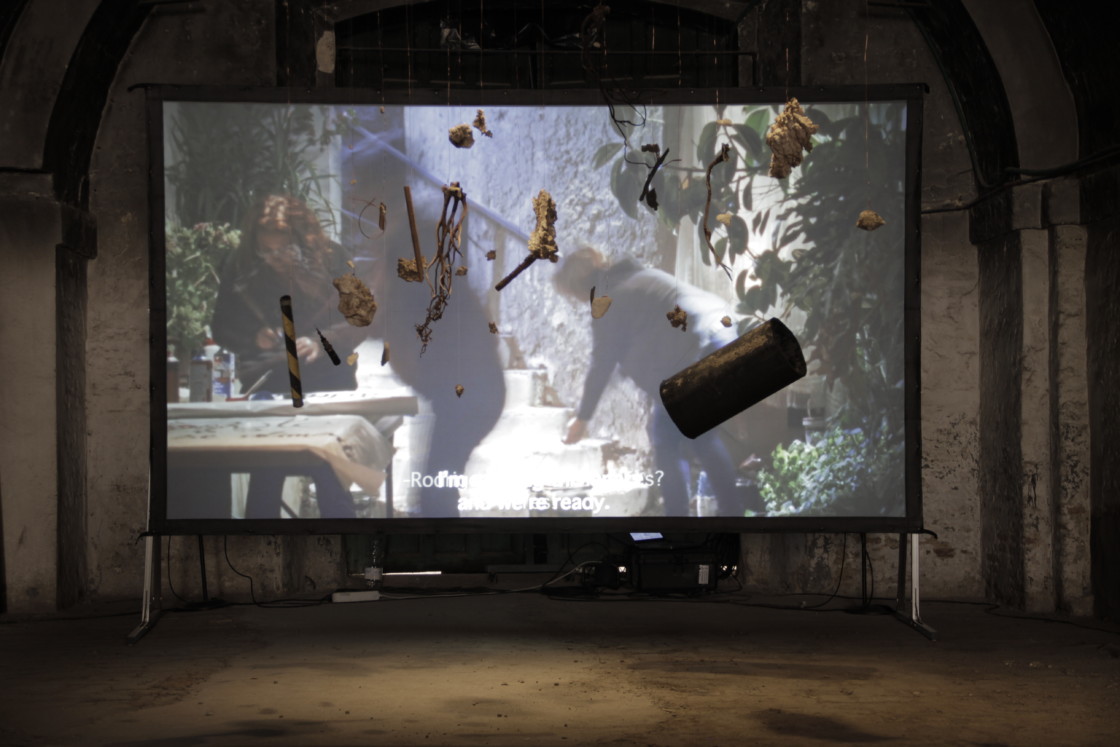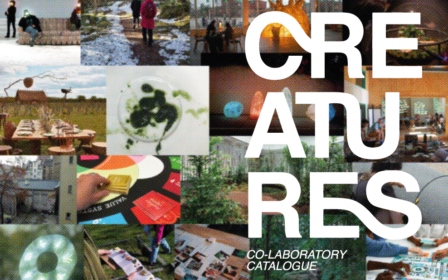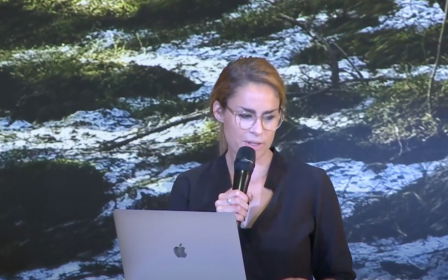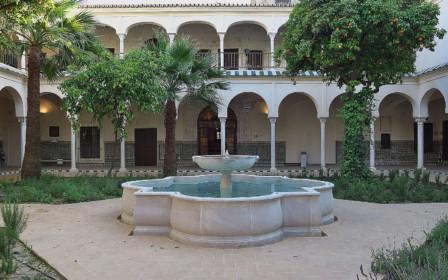The Fallen Clouds is a speculative research-based project that delves into the socio-environmental resonances of digital infrastructures in Chile to break the myth of dematerialised cloud computing. The narrative follows a digital cloud searching for its body and origin extended from submarine cables in the Pacific ocean, data centres in Santiago, to lithium extraction in the Atacama desert. On the journey, it becomes entangled with diverse human and more-than-human beings, socio-environmental conflicts, as well as past, present and future myths. This journey takes the form of an atmospheric installation composed of floating sound sculptures and a digitised S16mm film projection to generate a deep listening and immersive experience.
The Fallen Clouds project explores the metaphor of a cloud as a way to connect two contemporary issues: the growing expansion of digital infrastructures and the climate crisis, crossed by forms of historical extractivism in certain territories. The project locates the ethico-political tensions between technological development and the eco-social crisis in three critical digital zones and infrastructures in Chile: a submarine Internet cable extended in the coasts of the Pacific Ocean, the new Google data centre in Cerrillos, and the carbonate plants of lithium in the Atacama salt flat. In each territory, the project authors engage with different beings affected by the presence of these infrastructures: from crabs in the submarine bottom to an ecofeminist group in Santiago and Lickanantay women in Atacama.
The Fallen Clouds film
The Fallen Clouds features a film composed of images of these different beings and the diverse processes happening around the digital infrastructures. The film narrative starts with a submarine observation of a new fibre optic cable extending throughout the coasts of the Pacific Ocean in Chile. It then follows the activist actions of MOSACAT (Movimiento Socioambiental Comunitario por el Agua y el Territorio) – an ecofeminist group organised against the installation of a new Google data centre in Cerrillos that would use 169 litres of water per second to cool down its servers. Finally, the film observes the extraction of lithium in the Atacama salt flat from the perspective of a geologist and three Lickanantay women: a girl, a woman, and an elder.
The film sound is recorded using different sound artefacts, from direct sound captures to contact and hydrophone microphones. Experimenting with sound tactilities allows the creation of viscous and electric sound compositions that support the narration of different myths, as told by MOSACAT and the Lickanantay women. From these materials, a ‘cloud symphony’ is born. The symphony is played through floating sound sculptures created with the materials gathered around the three infrastructures explored, including a salt flat crust, water pipes from the lithium extractive sites, dried seaweeds from around the fibre optic cable, and a piece of a fibre optic cable itself.
Each piece is connected to a speaker or to a transductor, generating a vibrating sound composition of The Fallen Clouds. This visual, sonic and material experience allows viewers to immerse themselves in a trance-like journey to break the spell of the cloud, inviting them to take a different perspective on digital technologies and imagine other possible futures connected to circular temporalities as well as interspecies and intercultural affective relations based on mutual care.
Filming & fieldwork
Prior to the film shoot, the authors conducted fieldwork in the three main locations. In January 2022, the fieldwork research took place in Cerrillos, at the territory where the new Data Center of Google will be located. The group worked with MOSACAT on the scriptwriting process in order to better understand their needs, demands, and desires connected to the film.
In February 2022, the group traveled to San Pedro de Atacama to attune to the local territory and generate collaborative bonds with local communities (who were previously familiarised with the project). These encounters involved a meeting with Karenn Vera Tito – a Lickanantay woman and educational mediator, and Juan Carmelo – a traditional environmentalist educator and a fellow friend of Karenn from the same indigenous community. The Fallen Clouds authors made a ritual of asking permission from the land and the ancestors to start developing the project and visited the land of their ancient abuelos (great-grandparents).
In April 2022, the group worked at the Lickanantay school of Río Grande with Ashley, the only ten-year-old student of the school, and her teacher Isabel Tito along with the traditional educator Juana Anza and artist Andrea Vera. Together with Karenn Vera Tito who acted as the educational mediator of the process, they applied different ludic dynamics to create a myth connecting the idea of the ‘cloud’ and its local socio-environmental resonances with the Lickanantay cosmovisions.
The filming continued in the Atacama Desert, starting in San Pedro de Atacama, a town located 2,408 metres above sea level. The work involved members of the Lickanantay community of Río Grande in the Chaxa lake, a place characterised by a rich and unique ecosystem and a sacred site for the local indigenous communities (the site is currently administered by the Toconao community, who kindly allowed the access to film in this place). The filming then continued in the centre of the Atacama salt flat close to the lithium extractive sites.
Film editing & installation
In May, the group followed the installation of the new submarine fibre optic cable Prat owned by the local telecommunications company, GTD, and recorded sounds at the seashore of the Pacific Ocean to capture the audio textures of places around the submarine cable. The film editing started in June 2022 and was followed with the construction of the final atmospheric installation.
During the fieldwork and filming process, the different materials that make up the ‘cloud’ were collected – algae, salt flat crust and water pipes used for lithium extraction. Different sound artefacts were used to create the vibrant cloud composition, including speakers of different sizes and transducers, accompanied by diverse fabric materials and other equipment to hang all the objects and speakers to create the final immersive art installation.
The installation including the film was exhibited at the CreaTures Festival in Seville, Spain (June – July 2022) and at Ars Electronica in Linz, Austria (September 2022).



